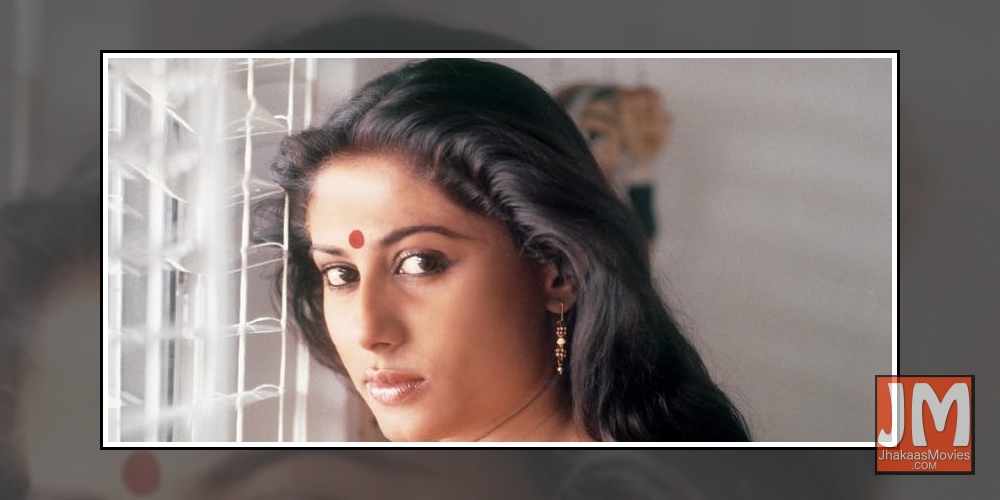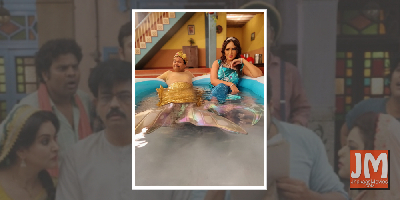 Aan Tiwari honoured with Best Child Actor award for Baal Shiv
Aan Tiwari honoured with Best Child Actor award for Baal Shiv Ghategi rahasymayi ghatnaye!
Ghategi rahasymayi ghatnaye! Amazon Prime Video unveils the 2021 Festive Line-up; brings a heady mix of Indian and International titles on the service
Amazon Prime Video unveils the 2021 Festive Line-up; brings a heady mix of Indian and International titles on the service Release: Music video of, Yeh Haalaath, from Mumbai Diaries 26-11
Release: Music video of, Yeh Haalaath, from Mumbai Diaries 26-11 Bhumi Pednekar feels she shares feel-good value with Akshay Kumar on screen
Bhumi Pednekar feels she shares feel-good value with Akshay Kumar on screen
Happy Birthday Smita Patil: 5 Unforgettable Films Of The Talented Actress

Born into a Maharashtrian family in Pune, Smita first faced the camera as a newscaster for Doordarshan in Mumbai. A graduate of the Film and Television Institute of India, Smita performed in over 80 films, both in Hindi and Marathi. After making her debut in 1975 with Shyam Benegal’s “Charandas Chor”, Smita Patil was an unstoppable force. She soon became one of the most recognised face of the New Wave movement in Indian cinema with contemporaries like Shabana Azmi, Nasseruddin Shah, Om Puri, Anant Nag and Kulbhushan Kharbanda.
Smita Patil’s finest performances are from this era. Between the late 70s to the mid-eighties, she essayed characters that were path-breaking, questioning the conventions of a male dominated society with intelligence, spunk and a tremendous sense of justice. Sadly, her promising career was tragically cut short when she died after the birth of her first child. Several of her completed films released after her death, and even today, decades later, her work remains a shining example of excellence in cinema. It is indeed ironical and quite insulting to Smita’s memory that an award in her name was given to an actor whose career has stood for the antithesis of Smita’s cinema.
#Bhumika (1977): Arguably Smita Patil's best work to date, it is hard to believe that the real-life heroine played the used and abuse reel-life heroine at the tender age of 22. Bhumika, in which Smita metamorphs from an abandoned child to a woman trying to make a career in a male-dominated world (many of those males she shares a personal relationship with) put her on the map as a performer.
#Chakra (1981): After Bhumika, Smita's second National Award came for Chakra, a role in which the actress is seen at her raw best. There is nothing rose-tinted about late filmmaker Rabindra Dharamaraj's story about a migrant who becomes one of the many thousand Mumbai slum-dwellers. A gripping story about survival in the big city, it is, unfortunately, best remembered for a bathing scene popularised on the poster, but should really be watched for its sheer grit.

#Mirch Masala (1987): Can one imagine a bigger dare-devil than 'Sonbai' and her deliciously devilish interactions with the tyrannical subedar Naseeruddin Shah? Unfortunately Smita's last role before her untimely demise, Mirch Masala shows her as the ultimate rebel and feminist before it became 'cool.' What culminates is perhaps the greatest climax sequences of all time.

#Arth (1982): While most people consider Mahesh Bhatt's Arth to be path-breaking due to it uncharacteristic climax where the wife turns down her apologetic husband and a kind-hearted suitor, it is Smita's performance as an insecure and delusional actress-girlfriend of the much-married filmmaker that really sticks with you. The actress' haunting portrayal of a downward spiral into insanity and final breakdown in front of alleged long-time rival Shabana Azmi is what makes Arth a classic.

#Namak Halaal (1982): Alright, so 'Poono' to Amitabh Bachchan's Arjun Singh is perhaps not the most stimulating of Smita's performances. But it does provide a fine example to how seamlessly she fit into roles that fit the mould of the typical Bollywood heroine - one who plays second fiddle to the tomfoolery of the male leads, she provides the eye-candy as she dances in the rain, and spouts cheesy dialogues for her lover. Namak Halaal is a multi-starrer which best represents Smita's versatility.









